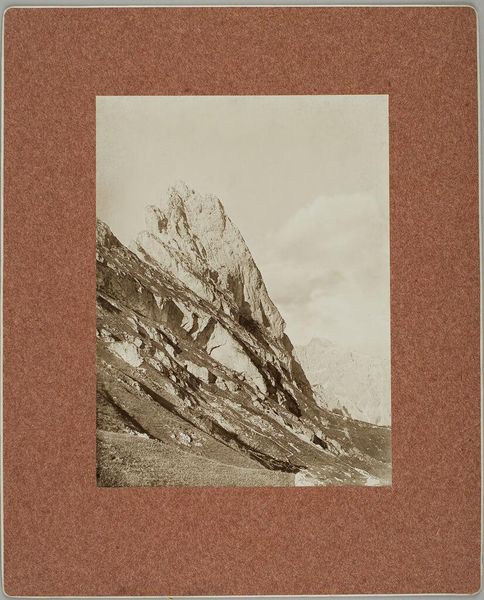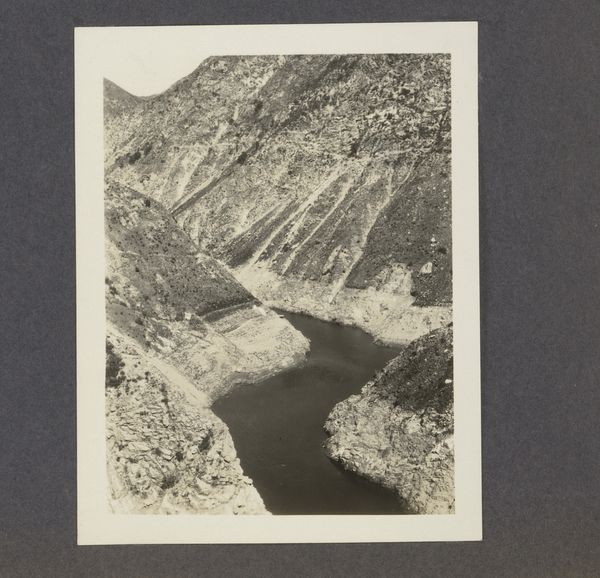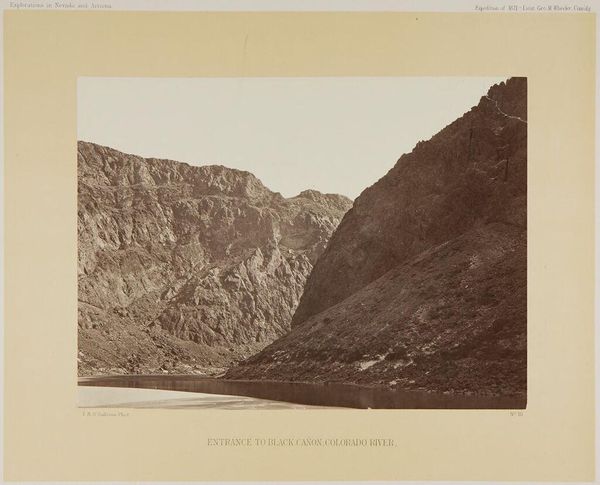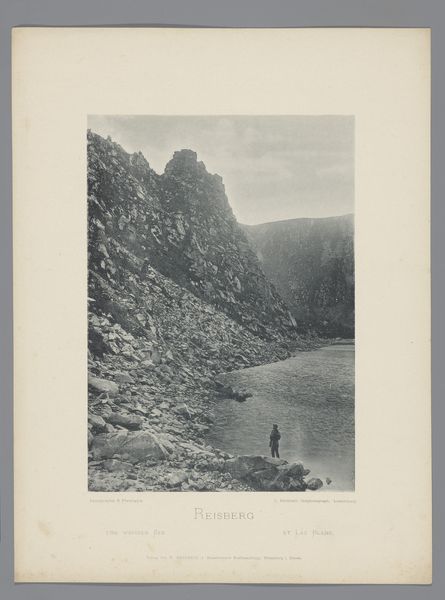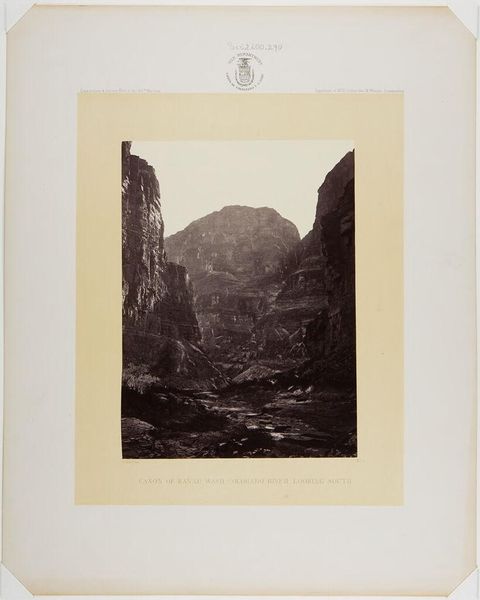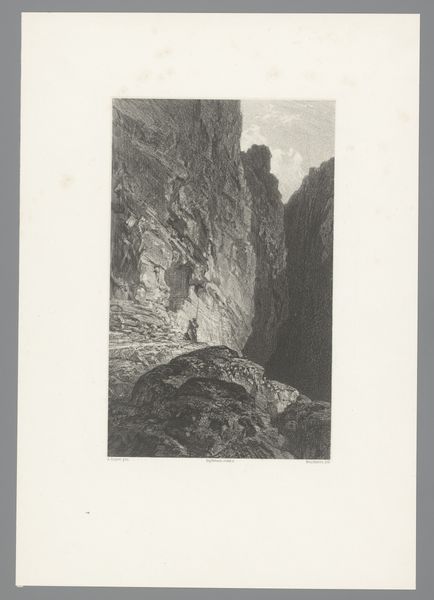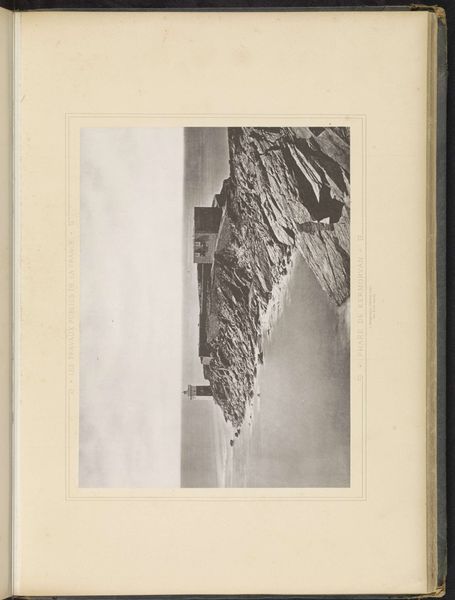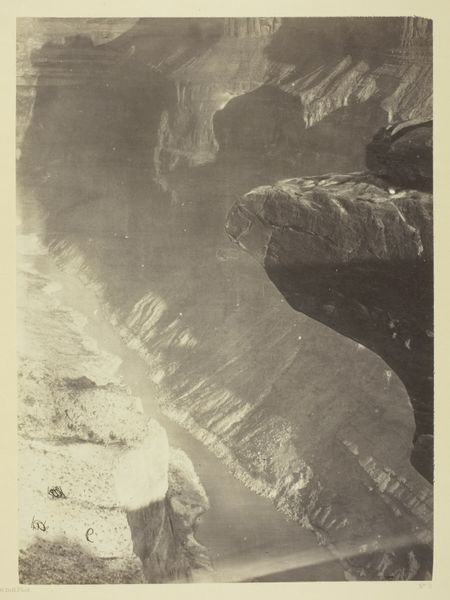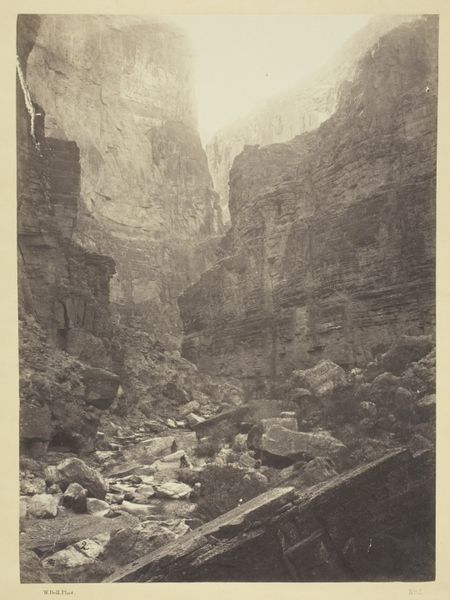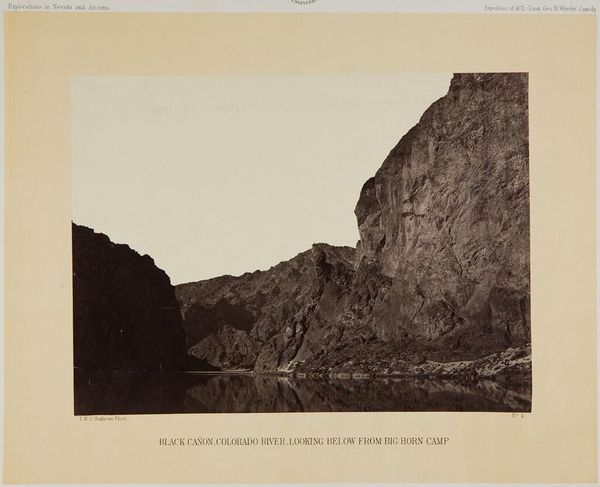
print, photography, albumen-print
# print
#
landscape
#
photography
#
albumen-print
#
realism
Dimensions: height 225 mm, width 169 mm, height 243 mm, width 329 mm
Copyright: Rijks Museum: Open Domain
Curator: Here we have an albumen print by Onnes Kurkdjian, dating from around 1895 to 1915. It depicts the "Kratermeer op het Idjen Plateau, Java, Nederlands-Indië" – or, Crater Lake on the Ijen Plateau, Java, in the Dutch East Indies. Editor: It strikes me as bleakly majestic. The somber tones really emphasize the stark geological drama—that towering, craggy rock face dominates the composition. Curator: Indeed. Consider that photography of this kind, during the colonial era, played a significant role in shaping perceptions of colonized lands. Kurkdjian’s work, presented within albums, offered Europeans a seemingly objective view of Java's landscapes, which bolstered colonial narratives. Editor: It's interesting how the photographer uses light here. The contrasting light and shadow accentuate the textures of the rock and really pull your eye toward the center. The subdued tonality adds to the feeling of solemnity, even remoteness. Curator: Exactly, because those elements conveniently omit certain elements, you might say. We aren’t seeing laborers, extraction operations, or anything that might complicate the romanticized picture of an untamed, resource-rich colony ripe for the taking. Instead, you get the sublime of raw nature! Editor: It’s a compelling tension: the sublime natural form, meticulously rendered by an intricate chemical process. There is a fascinating, delicate texture to the albumen print, isn’t there? Curator: Certainly, that’s another component of its allure. These meticulously produced images were, in themselves, symbols of colonial power. They circulated within elite circles, reinforcing ideologies. Editor: Looking at this photograph today, divorced from its original context, one can appreciate it as a masterful exercise in monochrome landscape photography, a powerful arrangement of shapes and tones. But with an understanding of the period, you begin to see it differently, and the details really come to life! Curator: Precisely. When considering the history surrounding the image, that stark landscape becomes even more thought-provoking as a mediated representation deeply embedded in the politics and economy of colonialism.
Comments
No comments
Be the first to comment and join the conversation on the ultimate creative platform.
